Sugar didn’t used to be hidden in all our food.
During our hunter-gatherer days, it’s estimated that humans ate probably 6 teaspoons of it per year.
Of course, we have no way of actually knowing exactly how much sugar our homo-sapien ancestors actually ate, and I’m not convinced that those exact amounts matter. What is clear is that sugar was a rare treat for those hardy hunger-gatherers. It was truly only found in-season fruit, root veggies, and rarely, honey.
Today, much of the sugar we eat is found in hidden sources.
The average adult in the US consumes between 75 – 156 pounds per year.
Soda, Little Debbie, Starbucks and Slurpee’s would take tens of thousands of years (at least) to develop. Those were brutal times.
Sugar is addictive.
The more of it that we eat, the more of it we crave. Rat and human studies show repeatedly that it is as addictive as cocaine. In fact, given the choice between the two, rats will choose sugar over cocaine.
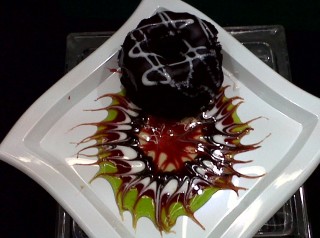
It’s time for a sugar detox.
Sugar is robbing us
It depletes our precious minerals and serotonin. It erodes our mood and energy. It also feeds cancer cells.
And it is making us fat and stupid in the process.
Watch as John Oliver illustrates my point (starts at min. 3:30). Then scroll down to find solutions.
[ctt tweet=”#Sugar makes us fat, sick and dumb. Here’s what to do if you’re eating too much. http://ctt.ec/qQaB4+ @FrancesLArnold” coverup=”qQaB4″]
If you’re like me, eating less sugar has taken effort. You need alternatives.
And it’s worth every ounce of effort that you put into it. The rewards for reducing your intake include weight loss, less risk of diabetes, more focus, improved energy, healthier skin, better mood, and slower aging. Oh, and did I mention that your risks for dementia and Alzheimer’s disease improve as you reduce your intake?
Here are ELEVEN simple ways to cut back your sugar intake every day.
1. Small amounts of sugar add up
It’s in Lunchables, peanut butter, ketchup, bread, pickles, yogurt, mayo, salad dressings, granola, snack bars, crackers, dips, sauces, beverages, etc etc. If it is in the first few ingredients, it is probably too high. Strive to eat foods that have less than 6 grams of added sugar per serving.
2. You’re being tricked by food companies
Food manufacturers hide the bad and glorify the good. Example: A Vitamin Water label says it contains 13 grams of sugar per serving. Not bad, you shrug. But did you notice that one bottle contains 2.5 servings? That’s 33 grams in your “health drink”. You can put that overpriced sugar water back on the shelf. Instead, try my other low-cost, flavorful water beverage ideas.
3. Low Fat = High Sugar (usually)
Check out your low-fat yogurt and compare the sugar content with a candy bar. Take a look at your low-fat dressing. With almost all of my clients, I recommend that they enjoy full-fat foods to nix the added sweetener. In fact, fat is far healthier for us than we’ve been led to believe. I’ll take fat over processed sweeteners any day.
4. You got to move it, move it
Physical activity releases endorphins that give you an immensely satisfying “high”. This high can be enough to help you forget about your hankering for a sweet treat. This added bonus of being more fit may give you the incentive to stay away from sugar longer. Oh, and physical activity stabilizes your blood glucose.
5. Just add fruit
You could eat a piece of fruit, which helps fill you with nutrients and fiber while also tasting sweet. Or, stuff fruit (and veggies) into a nourishing smoothie. This tip goes a long way to helping curb a junk food sweet tooth. Nourishing yourself with vitamins, minerals and enzymes is a total win!
- Check out my blog post on tips for making yummy smoothies that help satisfy a sweet tooth.
- Or, find a delicious smoothie recipe found on my Pinterest board.
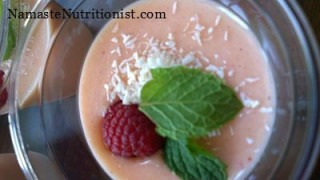
6. Fruit is not a main course
Modern fruit varietals are selectively bred to be the sweetest possible. Fruit is loaded with fructose (a natural fruit sugar). Consume up to 3 servings per day, or maybe a little more in the summer (the season when it is most abundant). But for goodness sake, don’t eat it by the bucket-load. Fruits that are lower in sugar are berries and apples. However, any piece of fruit is better than a candy bar. =0)
7. Watch out for sugary flavored yogurts
Many brands, including Tillamook and Dannon, contain more sugar in one serving of yogurt than in a single candy bar. When it comes to yogurt, read your labels. Opt for unsweetened yogurt. I purchase 2% or whole yogurt because the fat mellows out the yogurt’s natural tang. Then, I add some sweet fruit or a dab of honey.
8. Jump off the fruit juice bandwagon
Contrary to public opinion, fruit juice is not a health food. It’s great for anyone who is experiencing bottoming-out blood sugar, as it will quickly revive it. However, it is a significant source of straight fructose sugar, without the fiber of whole fruit, which slows the rate of processing. This concentrated dose of fructose without fiber is unhealthy for your liver. Personally, I reserve the juice for a cocktail.
Try these delicious beverage recipes to satisfy a sweet tooth instead.
9. Bring out the herbs and spices
Not only do herbs and spices bring out the flavor in foods, they also shower your meals with a powerful punch of nutrients. A little bit of spice delivers huge nutrition rewards. Cinnamon, ginger, clove and cardamom are just a few spices that enhance sweetness in a dish, which allows you to use less sugar.
- Here are my 21 Superfood herbs and spices to incorporate in your meals
- Here’s how to use Herbs & Spices to replace sugar in recipes
10. Go to parties and social events prepared
Eat something ahead of time so that you have your cognitive function intact when making food decisions. (We all have had those days when we’re famished and we raid the junk food reserves.) Have a snack with you, just in case the spread is mainly processed, sugary desserts. If you’re hungry, you’ll be more likely to splurge on a lot of treats that you’ll later regret.
11. Learn how to feel good with non-food sources
We tend to crave sweet things when sad or stressed. Make an effort to pick another activity. Try creative pursuits, books, bath time, cuddles, exercise, meditation, playing with children, pets & friends, committing random acts of kindness, volunteer work, etc.
Helpful Resources For Reducing Your Sugar Intake:
Book: Lick the Sugar Habit I read this book because the author relates well to sugar addiction. Dr. Nancy Appleton cured herself of chronic illnesses by changing her diet. In it, she explains how it worked for her, and how it can help you too through a variety of simple techniques, and mouth-watering, healthful recipes.
Other resources:
- How much sugar do you eat?
- Profiling Food Consumption in America
- Intense Sweetness Surpasses Cocaine Reward
- How Sugar Harms Your Brain Health and Drives Alzheimer’s Epidemic
- Increased Fructose Intake as a Risk Factor For Dementia
What’s your biggest sugar struggle?
Is it hard to give up because it’s too easy to find, or because it’s comforting, or because it’s a strong habit?
Share your thoughts below with me so I can help offer more advice that relates to you!

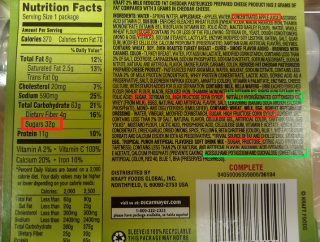
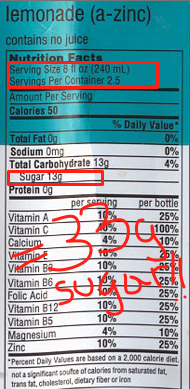
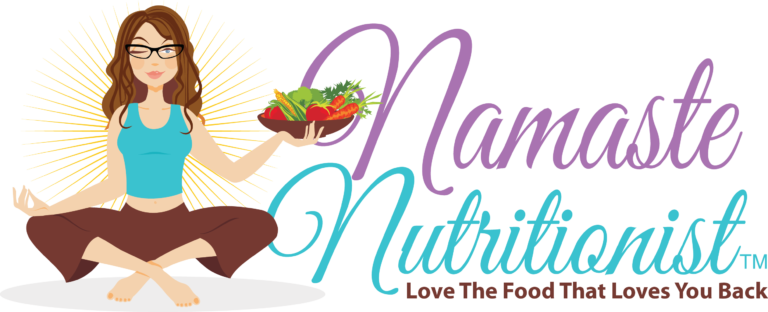
24 responses to “11 ways to eat less sugar”
Interesting article! I’d be curious to know what you’re take is on the sugar detox diets?
Hey Kate, there are a lot of different suggestions out there for sugar detoxing, so I can’t comment on them all. But in general, just stopping eating processed sugar (or drastically reducing your intake), is a big help. Your body will be able to detox more easily when you aren’t adding more baggage to it, in the form of processed sugar. A good detox approach would be to make lifestyle adjustments: eat whole foods – especially greens, sleep 7-9 hours, exercise, sweat, drink filtered water, ensure you’re obtaining all the vitamins and minerals your body needs to run well. This shouldn’t be a short-term detox approach, but a life approach. I hope this helps. Write again if I didn’t address your question.
If you recommended just one of the books, which would it be?
Your question had me review my original suggestions, and I realized that I didn’t add my very favorite book. (I’ve updated the post to contain it.) It’s called “Lick the Sugar Habit” by Nancy Appleton, PhD. That’s what I recommend you use first. Let me know how you like it!
These are actually really easy steps anyone can start taking Frances. Thanks for really identifying steps we can all make to get even just a bit healthier.
Awesome, Kelly. Thanks for your feedback! May you and your family be blessed with abundant health.
Frances, I especially appreciate the specific info about aiming for foods with less than 6 grams of added sugar. Too often people give general advice with no specifics to make it actionable for the reader. Thanks for avoiding that trap!
Kathleen, thanks for the feedback. It’s good to remember to be specific, and I don’t always do this. Actually, it’s tricky to be specific when it comes to nutrition. I really dislike giving black and white “exacto” advice. What works for one person spells trouble for another. So, I usually wade in more general territory unless I know a person’s exact medical situation. Reducing sugar to 6 gms added sugar per day is a pretty safe recommendation. =-)
I so much want to cut down on sugar. This article was really helpful.
Glad it helped, Yehudit. If you cut back little by little, and celebrate your success along the way, you will be able to cut back on sugar. Try to set a specific goal for what success would look like. Is it 10 gms added sugar per day? Is it only 2 servings fruit per day? Is it giving up the sugar in your coffee? Whatever goals are right for you, set benchmarks for growing toward it. And once you reach your desired goal, continue to grow in other ways that support maintaining the goal. =-)
A while ago, I decided to nix processed sugar from my diet and was shocked at how little there was now to buy at the grocery store! Still it was well worth it and even though I thought I’d miss sweets I have found that even when I have a small taste it’s so crazy sugary I don’t enjoy it.
I appreciate your tips about fruit! Some new insights there to consider.
Hey Bonnie, isn’t that revealing about how much processed food contains sugar? Good for you for nixing the sugar completely. That takes dedication, and your health will surely be improved because of it. After a while, I’m guessing you don’t miss the sugar, right? I’ve found that the more I limit unhealthy additives in my foods, the more it encourages me to cook from scratch at home. And by doing this, I’ve saved money and improved my health. Hopefully, you’ve found the same. Cheers!
#3…YES. It is not in my repertoire yet! But that makes so much sense!!! Thank you 🙂
You’ll get there, Laura. Take it one day at a time. We all have areas we’re trying to improve. Even me!
Awesome post! I had brownies and ice-cream for breakfast today… so you know I needed to read this! Great suggestions and I am passing this on to several friends. Thanks again!
Tricia, you crack me up! Love your honesty! =)
GREAT info Frances!! My husband and I are “Boomers”, he is a type2 diabetic, controlling it with diet and oral meds. We are working towards better food choices. This article really is a stepping stone in the right direction. PS: keeping a food diary led me to find out that even a smidgen of choc. is a craving trigger…so selecting fruit choices is satisfying, and puts my cravings in check! Thanks.
Nice insight, Kay! People who keep a food diary usually uncover such subtle patterns. It’s a powerful way to know thyself and improve your weight and health results! Go you!
Hi Frances,
These are tips that really help in breaking the sugar habit. Thank you for the steps. Is there anything besides stevia that is better than artificial sweeteners. Stevia has too bitter an aftertaste for me.
Lilia, spices are a great way to enhance sweet flavors without adding sugar. Try cinnamon, nutmeg, cardamom, vanilla, ginger. Bitter flavors help reduce a sweet tooth too. And coconut is a sweet tasting fat that adds delicious flavor to foods! =0)
Lilia, try licorice root for a natural sweet flavor (no anise flavor). It’s great for your adrenals. But take care if you have high blood pressure with licorice. It’s found in a lot of teas. I add loose licorice root to my teas at home, and it tastes incredibly good. Another helpful tip is to enjoy sweet spices to enhance foods where you naturally want to add sugar. I wrote about these spices here: namastenutritionist.com/19-ninja-herbs-and-spices/
So you’re saying that Stevia is actually ok?
I’ve used the organic liquid for several years now. I usually put 4-5 drops in my coffee and use it instead of sugar on things like toast with almond butter. Is this safe?
Hi Gail, Stevia, so far, is considered safe to use. Its flavor is extracted from the Stevia plant. However, like with anything, I would advise using caution to not overdo it. In my home, we use a couple of drops in our coffee or tea. But we try to “sweeten” other foods, like toast and hot cereal, with sweeter spices. So, instead of adding sweetener to almond butter toast, try using thin apple slices or banana slices. Or just opt for savory. Use a little miso and avocado on your toast, or miso and a little bean spread. Pesto is also wonderful on toast. I know it’s “outside the box”, but it’s helped us get off of the sugar high in my household. Best wishes!
Hi Frances,
Your post is helpful in my quest to cut back and eventually cut out processed sugar. Thank you!
I wish the labels would separate the sugar grams between the “naturally occurring sugar” and the “added” sugar. For instance, my whole plain, organic yogurt has no added sugar, and I “know” the naturally occurring sugar in milk/yogurt is 13 grams per 1 cup serving – no types of sugar listed in the ingredients. But, when I want to buy a whole wheat fig bar, I cannot distinguish between the naturally occurring sugar in the figs and how much sugar “they” added. It would be helpful.
Thanks, Dianne